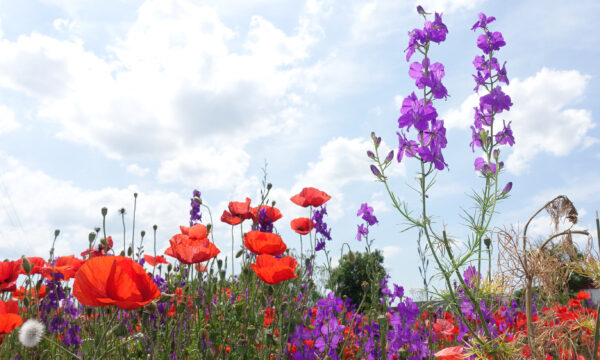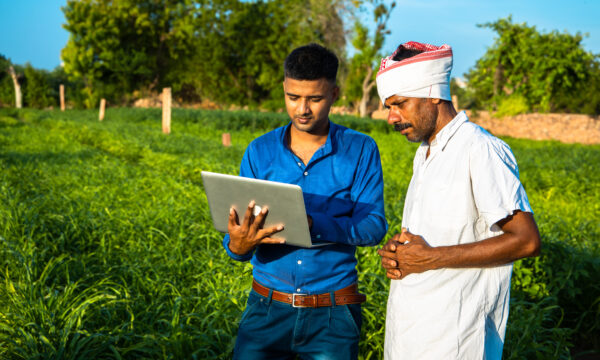Rodents are a particularly challenging pest in the rice production industry as they are a problem all the way from sowing to harvest. The rice field rat (Rattus argentiventer) causes average losses of 10-20% in rice growing areas. Ranking as the most important non-weed pest in Indonesia for 15 years up until 2000. Integrated Pest Management (IPM) can be effective for rodent control, keeping these pests below levels that cause significant damage or loss of profit. Integrated rodent management is a coordinated strategy which combines prevention, detection and control.

Rodents as pests of rice
There are many rodent species which cause problems with rice production. However, the main rodent pests are the rice field rat (Rattus argentiventer), black rat (Rattus rattus) and lesser bandicoot rat (Bandicota bengalensis).
Rodents cause damage to rice crops in many different ways. Rats will feed on the rice seed once it’s been broadcast, as well as later, feeding on young seedlings and mature plants. Rats will also damage the rice bunds by burrowing and building tunnels or nests. This can cause the bunds to collapse.
The presence of rats can be identified by missing or chewed germinating seeds, grains or plants, chopped young seedlings and delayed grain maturity. Feeding damage to stems may appear similar to that caused by insect pests, but is distinguishable by clean cuts through the rice tillers. And rodent feeding of rice grains can appear similar to damage caused by birds.
Rice field rats have been recorded to cause average losses of 10-20% in rice crops in Malaysia and Indonesia. And in areas close to refuge habitats, like canals, chronic losses as high as 30-50% have been documented. Similarly, the lesser bandicoot rat can cause yearly losses of up to 60% in India.
Factors affecting rodents’ impact
Several factors can effect how severe the impact of rodent pests can be. The availability of food, water and shelter effect their reproductive rates, and therefore how quickly their populations can grow. As rats can have very high reproductive rates (with one pair and their offspring potentially able to produce 1500 more rats in just 1 year), withholding optimum breeding conditions is important. In addition, cropping losses are higher when double or triple cropping are practiced.
As well as causing crop damage, rats are vectors of diseases, like leptospirosis, which can disproportionately affect rice farmers.

Management of rodent pests: Prevention
The Trap Barrier System (TBS) is a tool developed for integrated rodent management. This strategy involves trapping rats within a rice field which has been planted earlier than the surrounding fields. Combining the use of fences and live-capture or kill traps, rodents can be removed before the main rice crop grows. This prevents significant damage from occurring in surrounding fields. This method is ecologically sustainable and doesn’t leave behind chemical deposits, but is labour-intensive and requires continued management.
This system can also be used for management at a community level, known as the Community Trap Barrier System (CTBS). This system has proved to be successful in irrigated rice fields in Tanzania, where rice yield increased by 40.91% as a result of a CTBS system.
Other prevention strategies include:
Building physical fences (polythene/plastic/electric), which are particularly good for small plots, but can be costly.
Synchronised planting and harvesting between neighbours (within 2 weeks) can prevent heavy damage to early-maturing crops. It also reduces available food and shelter sources outside of the synchronised cropping period.
Keep rice bunds in the crops narrow (<30cm wide) to discourage rats from burrowing. And identify any holes in the bunds and fill them with clay.
Use natural repellents like Gliricidia leaves, wild pineapple stem pieces or goat manure.
Monitor for signs of rats including active burrows, faeces, footprints, live rats and plant damage.
Management of rodent pests: Habitat management
Methods of habitat management aim to remove existing and potential rodent habitats.
Reducing cover and potential habitats can help to limit rodent populations. This exposes rats to natural enemies and decreases the carrying capacity of fields. This involves keeping storage areas, field margins, bunds and the fields’ surrounding areas clean and clear of tall weeds or harbourage.
In addition, any rat burrows or breeding areas should be actively destroyed. Flooding, digging and smoking of rat burrows are common methods, and dogs can also be used to identify burrows.
Management of rodent pests: Lethal control
Lethal control is necessary in many cases to manage heavy rodent populations causing significant damage.
A range of traps can be used to manage populations, including snares, multiple-catch cage traps, snap traps and cage traps. When placed in strategic locations, trapping can be very effective. However, it can also be costly and laborious over a large area. Well-organised rat drives with clubs and sticks can also be effective.
The use of rodenticides, often in the form of wax blocks, can also be used to manage rodent populations. Only registered rat poisons should be used, and bait stations should be placed away from children, pets and livestock for their safety.
Other methods of control include logging fields with water (in the case of very heavy rat incidence), providing perches for owls to increase the prevalence of natural enemies, and using biological control (e.g. parasitic protozoa Sarcocystis singaporensis).
Further reading
If you would like to find more information on this subject, please visit the links below:
Trap Barrier System (TBS) as a New Tool for Rodent Pest Management in Irrigated Rice in Africa – A study assessing the effectiveness of the TBS and its variations for managing rodent populations in rice production in Africa.
Plantwise Factsheet for Farmers: Rat on rice – Thailand & Pest Management Decision Guide: Rat in rice – Cambodia – Country specific resources for rat management in rice production in Thailand and Cambodia respectively.
Pests and diseases: Rats – IRRI Factsheet about community control and management of rats.
Related News & Blogs
Managing mango mealybugs
Mango mealybugs are one of the most important insect pests affecting mango production across tropical and subtropical regions in Africa and Asia. These sap-sucking insects not only reduce the quantity and quality of fruit but can also weaken trees over…
27 May 2025




